Traces of Jewish life in Borghorst
The initiative “Stolpersteine Steinfurt-Borghorst” remembers the fate of Jewish residents, and calls for a living culture of remembrance.
Continue
here
The Borghorst synagogue
During the Nazi period, the Jews of Borghorst were either expelled, deported or murdered. Their synagogue was destroyed by arsonists during the pogrom of 9-10 November 1938. The fire brigade did not extinguish the fire, but instead merely protected the surrounding buildings. Sandstone slabs laid in 2010 make the foundation walls of the lost synagogue visible again.
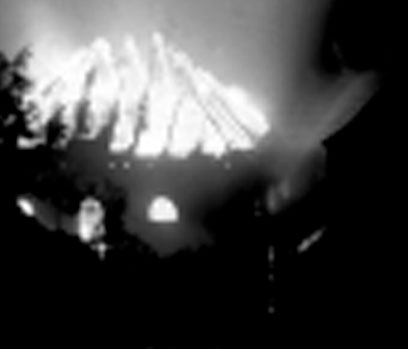
Hidden and preserved in the attic for 59 years
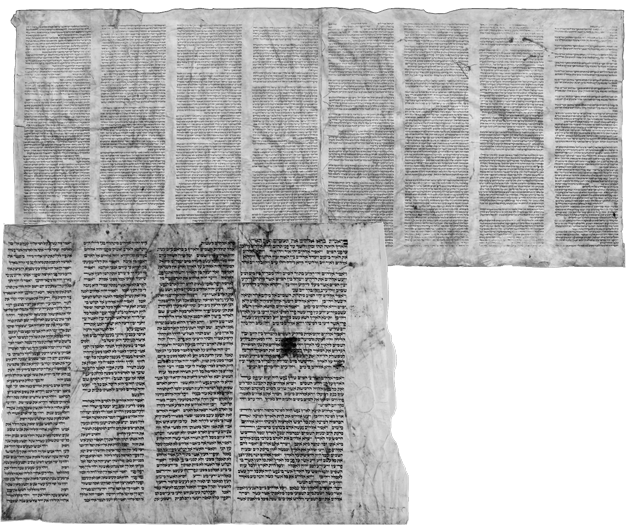
The Torah of Borghorst
In 1938, an eyewitness recovered parts of the burned Torah and deposited them in the attic of his parents’ house. He gave them to the Jewish community of Münster anonymously in 1997, where they are now on permanent display.
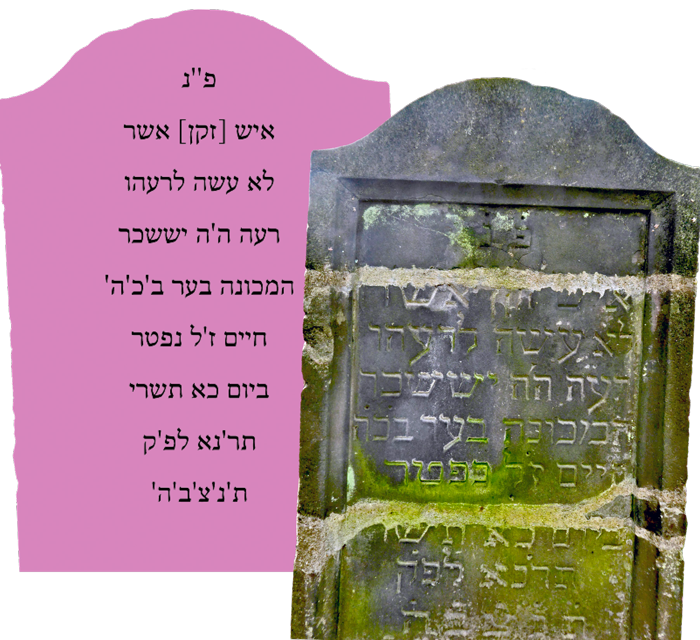
Here rests an [aged] man who did no evil to his neighbour. The honoured Mr Jissachar called Bear, son of the honoured Mr. Chajim of blessed memory. He passed away on the 21st of Tishri 651 according to the Jewish calendar (= 5 October 1890). His soul be bound in the bundle of life.
Villa Heimann
Together with their four children, the respected Jewish couple Frieda (*1894) and Albert (*1881) Heimann lived in a Wilhelminian-style villa in Borghorst. It was looted in 1938, “Aryanized”, appropriated by the local municipality – and then, despite massive opposition, demolished in 2014.
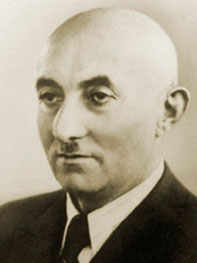
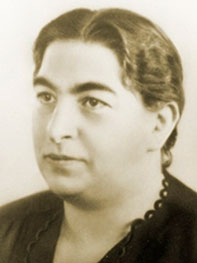
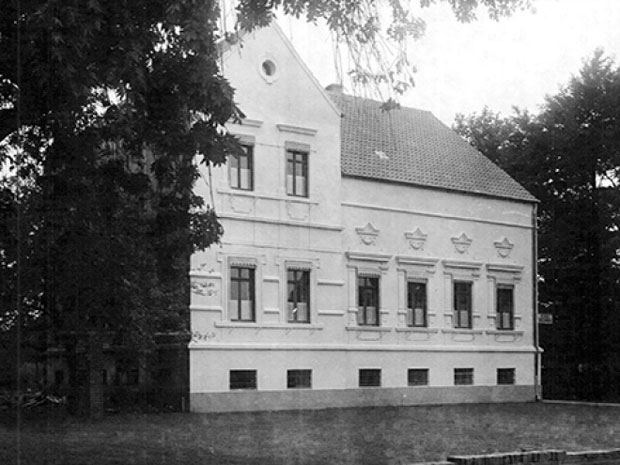
But a brick made its way to Toronto in 2018, and this privately commemorates the crimes suffered under Nazism
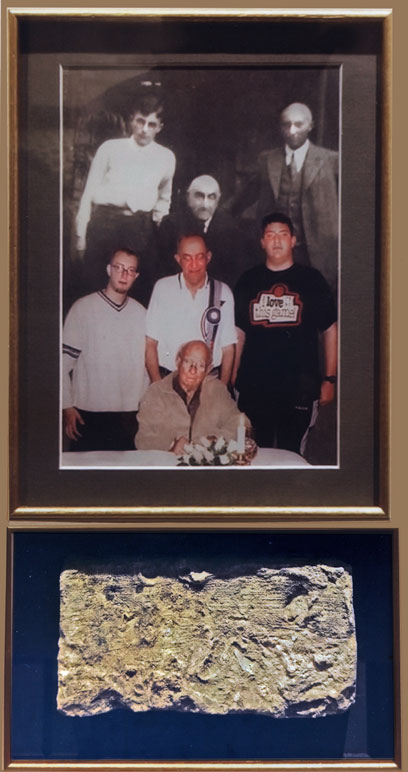
But a brick made its way to Toronto in 2018, and this privately commemorates the crimes suffered under Nazism; accompanied by photographs, it also demonstrates the cohesion and continuity of the Heimann family.
Family photo and original brick owned by the Heimann family from Toronto
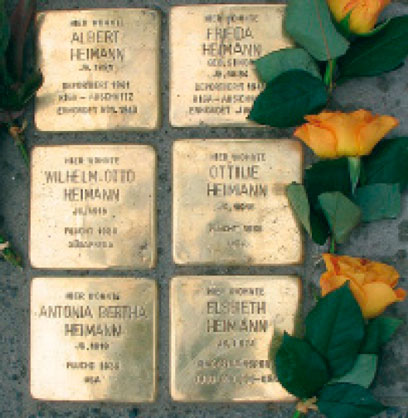
the Heimann family members
On the two paths flanking Gunther Demnig’s six Stolpersteine are about 100 bricks from the demolition, these marking the borders of the property and the way to the railway station – in memory of deportation and death.
How long the broken black gravestone slab and its broken stone setting have been lying upside down at the feet of the cemetery visitor is unclear.
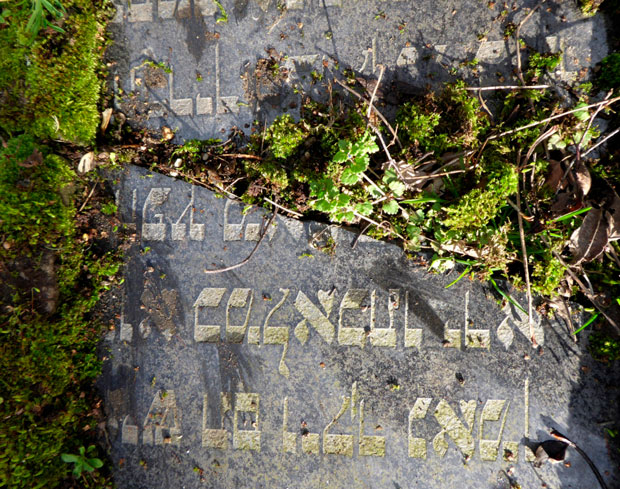
Broken gravestone at the Borghorst cemetery
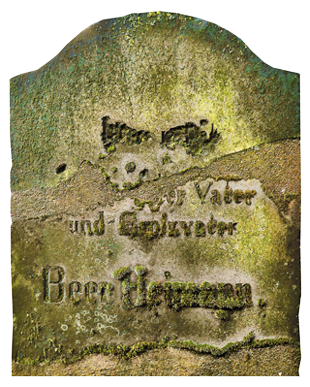
“The lost memorial”
A mobile object, created by Werner Bülter and Jupp Ernst
This mobile object with the title “Villa Heimann – a lost memorial” is an original window frame from the rubble of the house built in 1889 that belonged to the Jewish Heimann family from Borghorst, at
Bahnhofstraße 14 (today: Anton-Wattendorff-Straße).
During the Reichspogromnacht on 9 November 1938, the house was looted and the family driven out. The children survived abroad, but the parents were murdered in Auschwitz.
Despite great efforts by the Stolpersteine initiative led by local residents, the villa was demolished to make way for the building of a new fire station.
The Office for the Preservation of Historical Monuments had previously deemed the villa to be an object of sociohistorical importance and worth preserving for Borghorst. But the majority in the building committee of the town of Steinfurt had a different opinion, and Villa Heimann was razed to the ground on 22 June 2014.
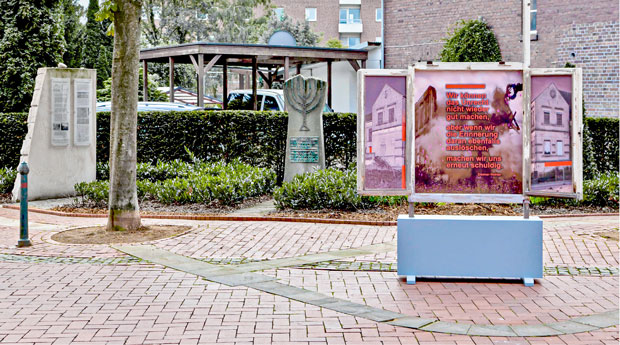
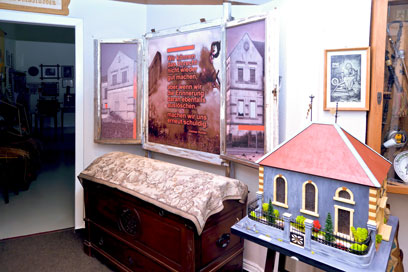
Demolition of Villa Heimann
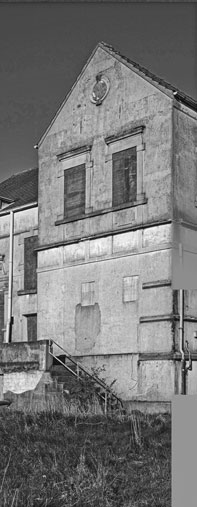
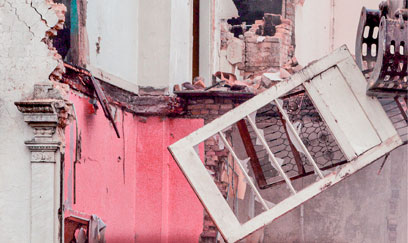
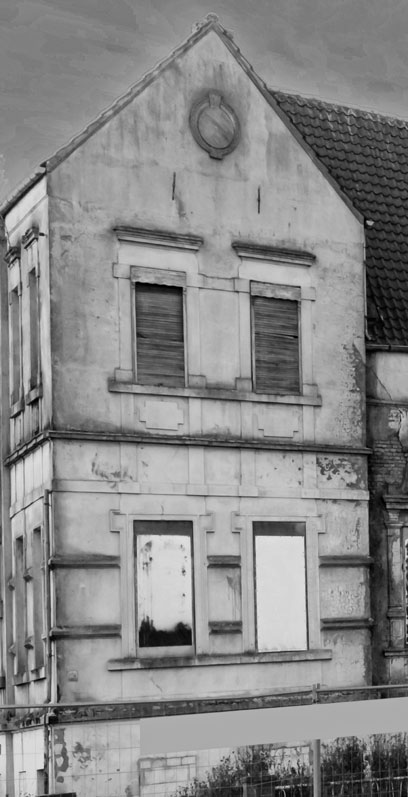
Villa Heimann –
a lost memorial
The majority in the building committee of the town of Steinfurt voted to demolish Villa Heimann, which then took place on 22 June 2014. This building was unique and of great sociohistorical importance: there is probably no other house in Borghorst with such a dramatic and tragic history.
The Jewish Heimann family from Borghorst lived in the house built in 1889 at Bahnhofstr. 14 (today: Anton-Wattendorff-Straße). Their villa was plundered during the Reichspogromnacht of 9-10 November 1938, and ‘Aryanized’ by the National Socialists in 1939. The family was driven out, the parents murdered in Auschwitz, and the four children survived abroad.
The municipality of Borghorst continued to use the expropriated house for various offices after the war, and rejected the Heimann family’s application for the return of their property in 1950, citing its own needs. It then granted the weaving mill A. Wattendorff, located opposite, the right of first refusal (1952), the company taking over the building in 1955.
In 1988, the company went bankrupt. Like the factory buildings, Villa Heimann was left to fall into disrepair, and was razed to the ground in 2014. As of 1998, Villa Heimann belonged once again to the town of Steinfurt. The Stolpersteine initiative had always stressed the need to preserve this house in remembrance of the deportation and extermination of the town’s Jewish population. Integrating the facades of the villa into the new fire station planned would not only have enriched the building architecturally; it would also have made it an authentic place of remembrance.
The local population provided donations and sureties to meet the additional costs of preserving the façade, but both the pleas of the descendants of the murdered Heimann couple and the appeals of Jewish communities fell on deaf ears. The decision to demolish the building ignored the commitment of local people to demonstrate solidarity with the victims. The central picture panel reproduces a note written by a signatory of the online petition to save the memorial for the victims and for all those who had to suffer a similar fate:
“We cannot right the wrong, but if we erase the memory of it as well, we make ourselves guilty once more”.
Dietmar Richter
Names of the Jewish citizens of Borghorst in 1939
Cohen, Herta
Cohen, Richard
Eichenwald, Anni
Eichenwald, Else
Eichenwald, Dr. Ernst
Eichenwald, Grete
Eichenwald, Karl
Eichenwald, Rosa
Eichenwald, Ruth
Eichenwald, Siegmund
Gumprich, Alfred
Gumprich, Bertha
Gumprich, Else
Gumprich, Emil
Gumprich, Gisela
Gumprich, Julius
Gumprich, Manfred
Heimann, Albert
Heimann, Antonia Bertha
Heimann, Elsbeth
Heimann, Frieda
Heimann, Ottilie
Heimann, Wilhelm Otto
Hertz, Günther
Hertz, Jenny
Hertz, Lore
Hertz, Norbert
Hertz, Moritz
Hertz, Rudolf
Hertz, Salomon
Hertz, Sidonie
Loewenstein, Hans
Loewenstein, Marianne
Loewenstein, Martha
Loewenstein, Moritz
Loewenstein, Siegfried
Simon, Erna
Simon, Leopold
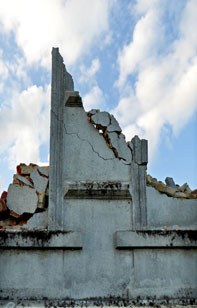

Collage of the Jewish
citizens of Borghorst 1

Stolpersteine initiative, Steinfurt-Borghorst
Photo credits: 1: Alfred Homann in 1938, photo in the Borghorst local history society archives; 2: Willi Ahlmer, 2014, commissioned by the Stolpersteine initiative, Steinfurt-Borghorst; 3, 15: Werner Bülter; translation: Ludger Hiepel; 4-6: Borghorst local history society archives; 7: Claude Heimann, Toronto; 8: Beate Kater; 9: Werner Bülter; 10-14: Jupp Ernst; 15: Werner Bülter; 16-17: Jupp Ernst
“Villa Heimann – a lost memorial”
Idea: Werner Bülter, in cooperation with Jupp Ernst, Alfred Flügemann, and the Stolpersteine initiative, Steinfurt-Borghorst